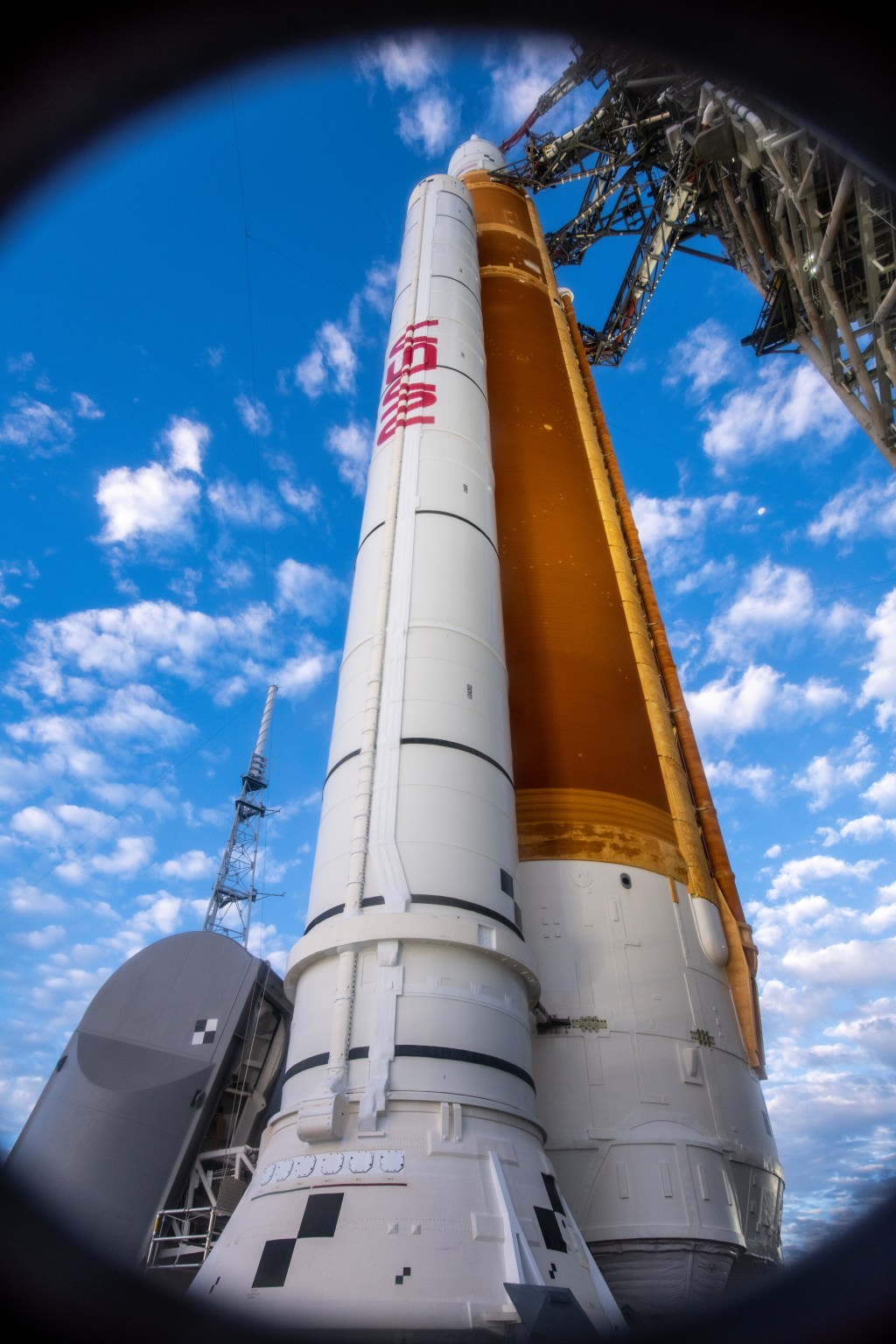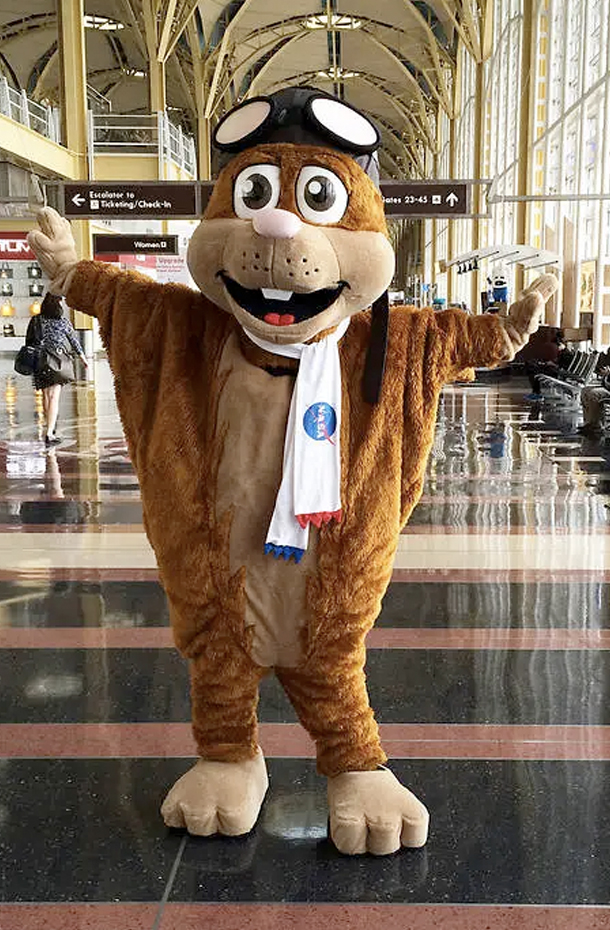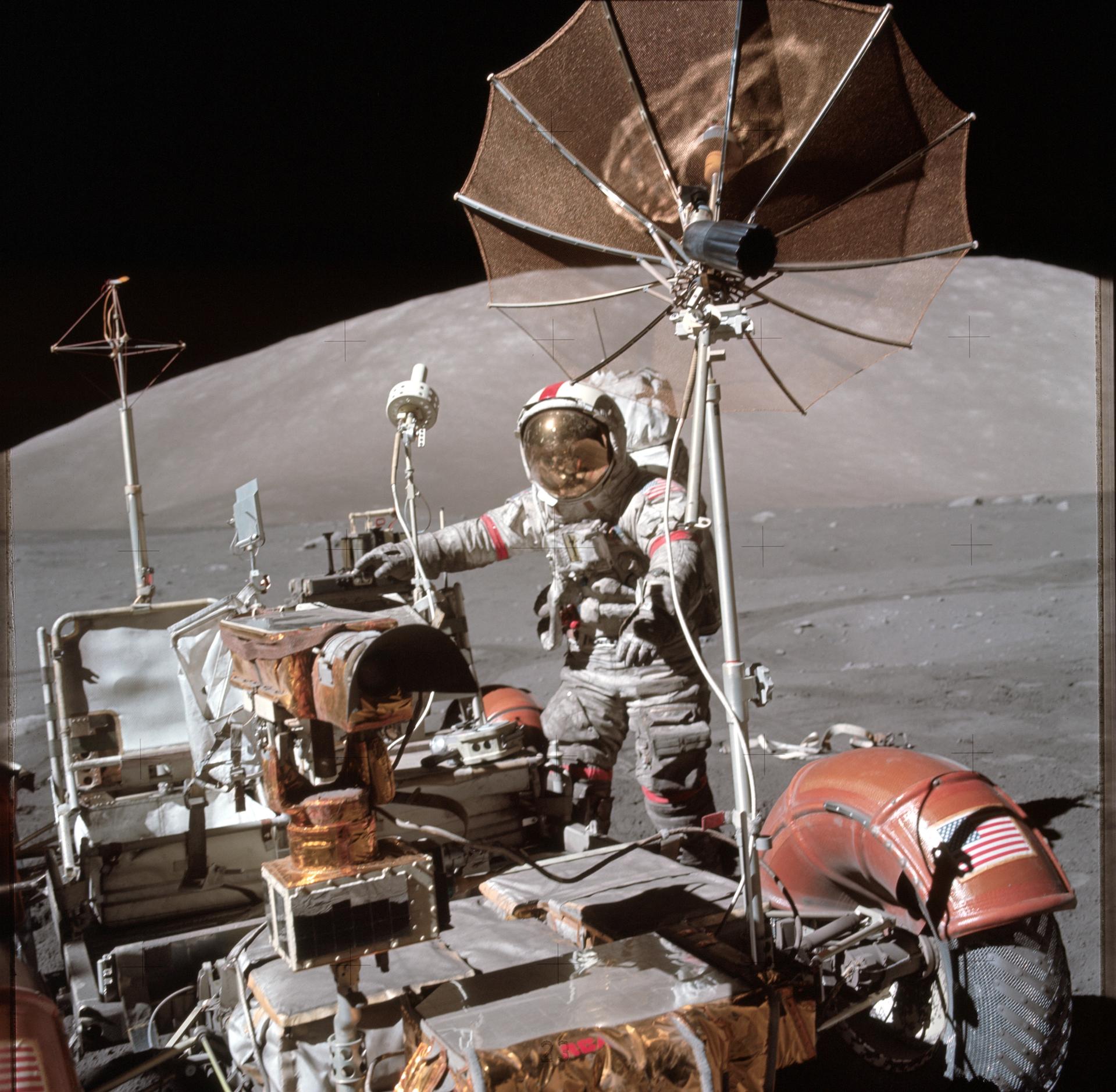Flying the friendly skies may one day include time-saving trips in air taxis to get from point A to point B – and NASA researchers are currently working to make that future a reality. They are using wind tunnel and flight tests to gather data on an electric Vertical takeoff and landing (eVTOL) scaled-down small […]...
4 min read
Preparations for Next Moonwalk Simulations Underway (and Underwater)
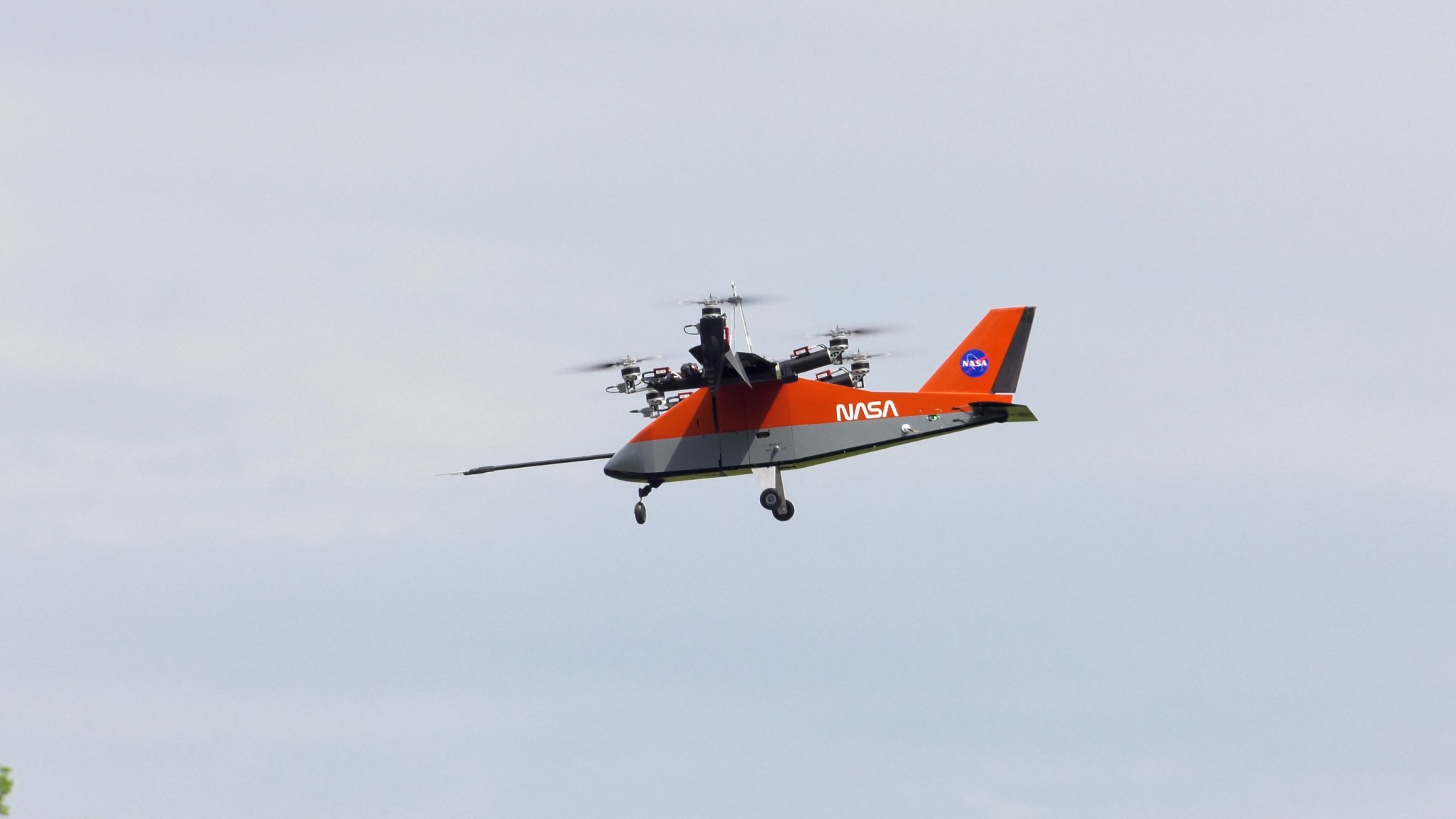
Flying the friendly skies may one day include time-saving trips in air taxis to get from point A to point B – and NASA researchers are currently working to make that future a reality.
They are using wind tunnel and flight tests to gather data on an electric Vertical takeoff and landing (eVTOL) scaled-down small aircraft that resembles an air taxi that aircraft manufacturers can use for their own designs.
As air taxis take to the skies, engineers need real-world data on air taxi designs to better understand flight dynamics and design better flight control systems. These systems help stabilize and guide the motion of an aircraft while in flight, making sure it flies safely in various conditions.
Currently, most companies developing air taxis keep the information about how their aircraft behaves internal, so NASA is using this small aircraft to produce public, non-proprietary data available to all.
“NASA’s ability to perform high-risk flight research for increasingly automated and autonomous aircraft is really important,” said Siena Whiteside, who leads the Research Aircraft for eVTOL Enabling techNologies (RAVEN) project. “As we investigate these types of vehicles, we need to be able push the aircraft to its limits and understand what happens when an unforeseen event occurs…”
For example, Whiteside said, “…when a motor stops working. NASA is willing to take that risk and publish the data so that everyone can benefit from it.”

Testing Air Taxi Tech
By using a smaller version of a full-sized aircraft called the RAVEN Subscale Wind Tunnel and Flight Test (RAVEN SWFT) vehicle, NASA is able to conduct its tests in a fast and cost-effective manner.
The small aircraft weighs 38 pounds with a wingspan of six feet and has 24 independently moving components.
Each component, called a “control effector,” can move during flight to change the aircraft’s motion – making it an ideal aircraft for advanced flight controls and autonomous flight research.
The testing is ongoing at NASA’s Langley Research Center in Hampton, Virginia.
Researchers first used the center’s 12-Foot Low-Speed Tunnel in 2024 and have since moved on to flight testing the small aircraft, piloting it remotely from the ground. During initial flight tests, the aircraft flew while tied to a tether. Now, the team performs free flights.
Lessons learned from the aircraft’s behavior in the wind tunnel helped to reduce risks during flight tests. In the wind tunnel, researchers performed tests that closely mirror the motion of real flight.
While the scale aircraft was in motion, researchers collected information about its flight characteristics, greatly accelerating the time from design to flight.
The team also could refine the aircraft’s computer control code in real time and upload software changes to it in under 5 minutes, saving them weeks and increasing the amount of data collected.
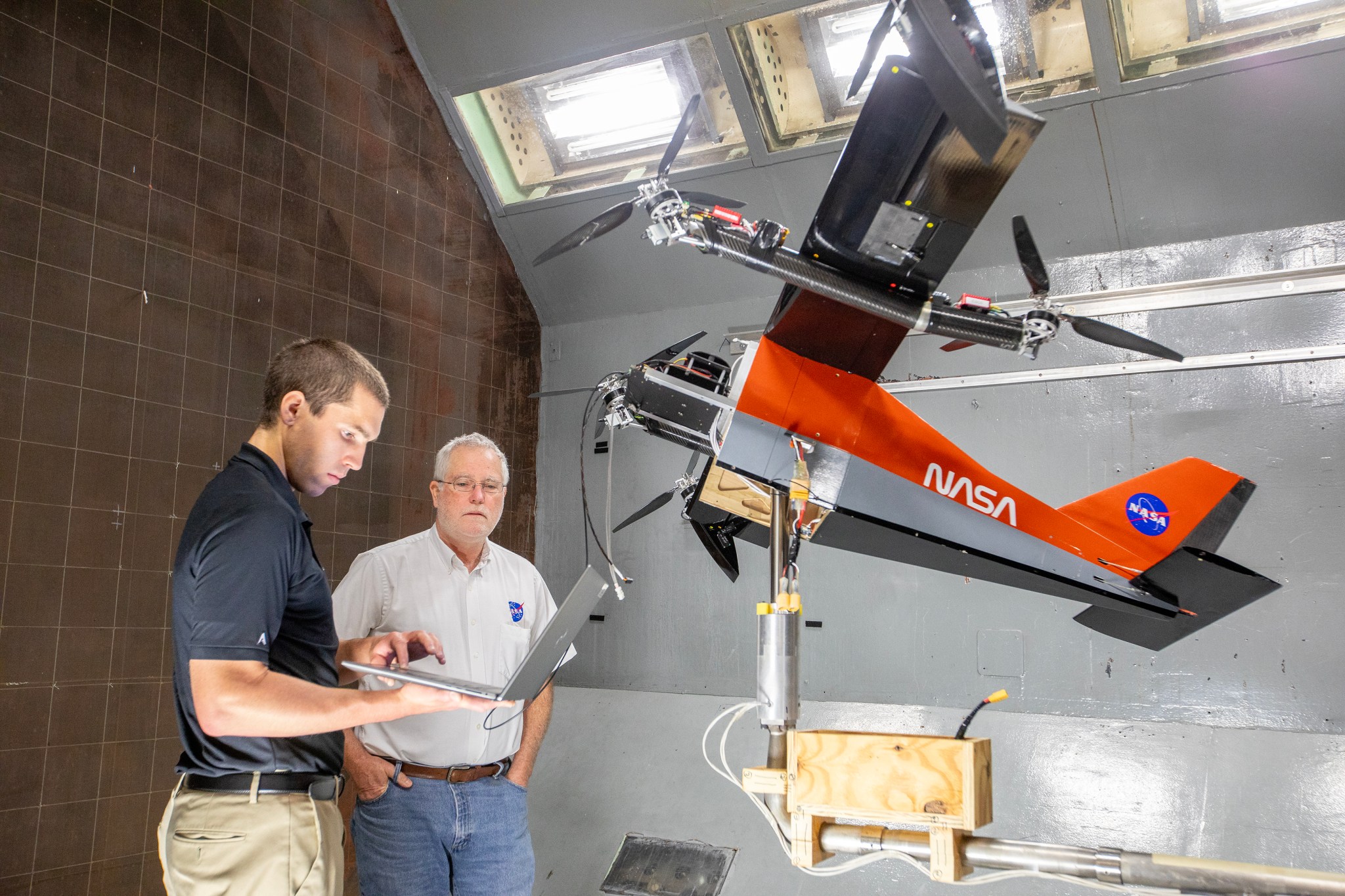
Partners in Research
NASA developed the custom flight controls software for RAVEN SWFT using tools from the company MathWorks.
NASA and MathWorks are partners under a Space Act Agreement to accelerate the design and testing of flight control approaches on RAVEN SWFT, which can apply to future novel aircraft.
The work has allowed NASA’s researchers to develop new methods to reduce the time for an aircraft to achieve its first flight and become a finished product.
RAVEN SWFT serves as a steppingstone to support the development of a potential larger, 1,000 pound-class RAVEN aircraft that will resemble an air taxi.
This larger RAVEN aircraft is being designed in collaboration with Georgia Institute of Technology and also would serve as an acoustical research tool, helping engineers understand the noise air taxi-like aircraft create.
The larger aircraft would allow NASA to continue to collect data and share it openly.
By performing flight research and making its data publicly available, NASA aims to advance U.S. leadership in technology development for safe, quiet, and affordable advanced air mobility operations.




